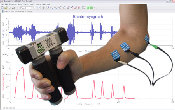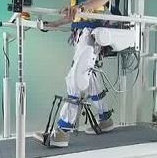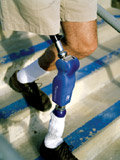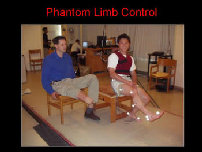Homepage
Bibilography/Links
Future technology
Biomechatronics research can be divided into three main categories
- Analysis of human motion
- Interfacing Electronic Devices with humans
- Testing living muscle tissue as actuators for electronic devices (4)
An understanding of physics principles is essential in understanding the movement of the human body. Take a moment to look at your hand, open and close it. How many motions do you think are involved in the human hand and arm? The human arm and hand is capable of twenty-two degrees of motion. All these motions must be studied in-depth to accurately duplicate the body. While the best prosthetics today only have three degrees of motion, the APL project hopes to duplicate all twenty-two ranges of motion.
How does Biomechatronics work?
At the University of Twente in the Netherlands, scientists study gait analysis or walking movements with a camera system and reflectors on the body. Ground reaction forces are measured with a force plate in the floor and activation of muscles are measured using (EMG).(5) An electromyography (EMG) signal is an electric potential generated by muscle contraction. An electrode can be placed on the skin or with a needle inserted into the muscle to record the EMG signals. Combining EMG signal analysis with 3D computer modeling program based on electromagnetic theory, researchers are using pattern recognition algorithms to guess the user's intent. In other words, when the muscle moves in a certain way, the prosthetic will guess that the user wants to open the hand.
At MIT, Dr. Hugh Herr and colleagues have invented a magnetorheological knee prosthesis that automatically adapts knee damping to the gait of the amputee, using only local sensing of knee force, torque, and position. So if the user wants to slow down, their knee will slow down with them. Watch this video to see what a difference this is making! In order to create these prosthetics, balance, leg retraction and angular momentum conservation all had to be closely
analyzed. Watch this video to see what a difference this is making!
Analysis of human motion
The Rheo knee
http://www.mhmoandp.com/
An EMG device with algorithm
http://www.qubitsystems.com
Dr. Hugh Herr on the left, measuring EMG signals, yes, he is an amputee
http://www.mhmoandp.com/
NEXT
Analyzing Michael Jackson's moon walk
http://www.mhmoandp.com/






